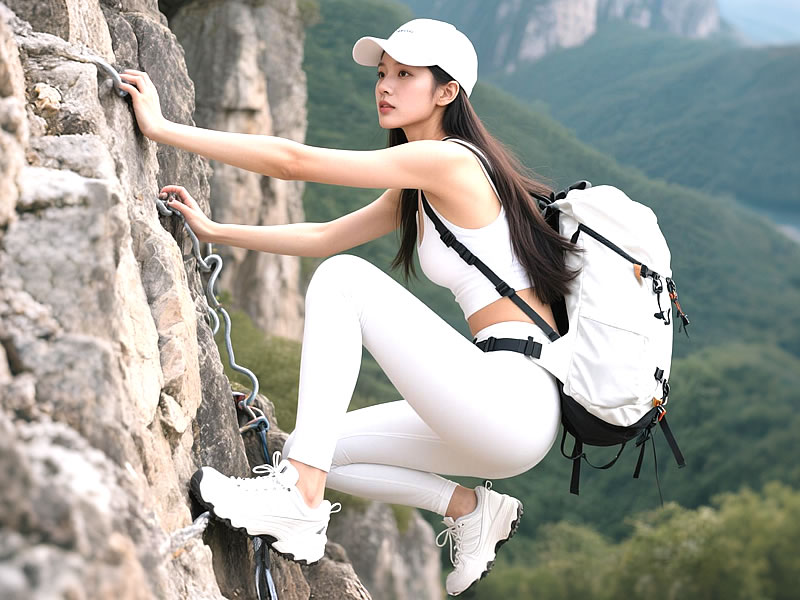How to stay safe during extreme outdoor adventures?
Extreme outdoor adventures—whether mountaineering, whitewater rafting, or solo wilderness trekking—offer unparalleled thrills but come with inherent risks. From sudden weather shifts to equipment failures, the margin for error is slim. This guide combines survival science, expert insights, and real-world case studies to help you mitigate dangers and navigate high-stakes scenarios safely.

1. Pre-Trip Planning: The Foundation of Safety
Risk Assessment and Route Planning
- Analyze Terrain: Use tools like CalTopo or Gaia GPS to map routes, identifying hazards like avalanche zones, river crossings, or rockfall areas.
- Weather Forecasts: Check hyper-local forecasts via Mountain-Forecast.com or Windy.app.
- Emergency Exits: Mark bailout points and nearest rescue hubs.
Pro Tip: Share your itinerary with two trusted contacts, including GPS coordinates and expected check-in times.
2. Essential Safety Gear for Extreme Conditions
Non-Negotiable Items
- Communication: Satellite communicator (e.g., Garmin inReach Mini 2, 3.5 oz) for SOS and weather updates.
- Shelter: Emergency bivy (SOL Escape, 3.5 oz) or ultralight tent (Black Diamond Firstlight, 2 lbs 13 oz).
- Fire: Stormproof matches, UCO Titan Stormproof Lighter, and Esbit Fuel Tablets.
Activity-Specific Gear
- Avalanche Terrain: Beacon (BD Pieps DSP Sport), probe, shovel.
- Whitewater: Throw rope, helmet, and quick-release PFD.
- Desert: Satellite phone, extra water (1 gallon/day), and sun-reflective tarp.
3. Skill Mastery: Training for the Worst-Case Scenario
Critical Competencies
- Navigation: Master map/compass skills and GPS waypoint marking.
- Self-Arrest: Practice ice axe techniques on snowy slopes.
- Wilderness First Aid: Obtain a Wilderness First Responder (WFR) certification.
Case Study: In 2018, climber Joe Simpson survived a crevasse fall in the Alps using self-arrest skills learned via guided training.
4. Weather and Environmental Threats
Recognizing Red Flags
- Avalanche Warning Signs: Recent snowfall (>12"), "whumphing" sounds, or cracking snow.
- Hypothermia: Slurred speech, shivering, and poor coordination (core temp <95°F).
- Heatstroke: Confusion, rapid pulse, and lack of sweating (core temp >104°F).
Response Tactics:
- Avalanche: Move to 30°+ slope edges; deploy airbag backpack if carried.
- Hypothermia: Replace wet clothes, share body heat, and hydrate with warm liquids.
- Lightning: Crouch on foam pad, avoid trees, and spread group 50+ feet apart.
5. Emergency Protocols: When Things Go Wrong
STEP Method (Stop, Think, Evaluate, Plan)
- Stop: Pause movement to avoid panic-driven mistakes.
- Think: Assess injuries, resources, and environmental threats.
- Evaluate: Prioritize needs (shelter > water > food).
- Plan: Execute the safest action (e.g., signal for help, ration supplies).
Signaling for Rescue
- Visual: Mirror flashes (Morse code SOS: 3 short, 3 long, 3 short).
- Auditory: Whistle blasts (6/minute).
- High-Tech: Activate Garmin inReach SOS and set up a brightly colored tarp.
6. Psychological Resilience: The Overlooked Survival Tool
Mental Strategies
- Stay Task-Oriented: Focus on immediate actions (build shelter, purify water).
- Combat Panic: Use box breathing (4-sec inhale, 4-sec hold, 4-sec exhale).
- Positive Visualization: Recall past successes to boost morale.
Case Study: Aron Ralston’s 2003 canyon survival relied on calm decision-making post-arm entrapment.
7. Post-Trip Debrief: Learning Near-Misses
- Analyze Close Calls: What gear failed? Were warnings ignored?
- Update Training: Address skill gaps (e.g., take a crevasse rescue course).
- Gear Audit: Replace worn items (e.g., frayed ropes, expired meds).
Budget vs. Premium Safety Gear
| Category | Budget Option | Premium Pick |
|---|---|---|
| Satellite Comms | Somewear Global Hotspot ($250) | Garmin inReach Mini 2 ($400) |
| Avalanche Gear | Ortovox Zoom+ Probe ($60) | Black Diamond Guide Pro Shovel ($90) |
| First-Aid Kit | Adventure Medical Kits 2.0 ($40) | MyMedic MyFAK ($150) |
SEO-Optimized Takeaways
- Keywords: Use “extreme outdoor safety,” “survival strategies,” or “emergency preparedness” in headers and text.
- FAQs: Answer “How to survive an avalanche?” or “What’s the best SOS device?”
- Readability: Break content into short sections with bullet points and bold terms.
Final Thoughts
Extreme adventures demand extreme preparedness. Invest in reliable gear, train rigorously, and respect nature’s unpredictability. By prioritizing safety over summit fever or river rush, you’ll transform risks into stories worth sharing—safely.






